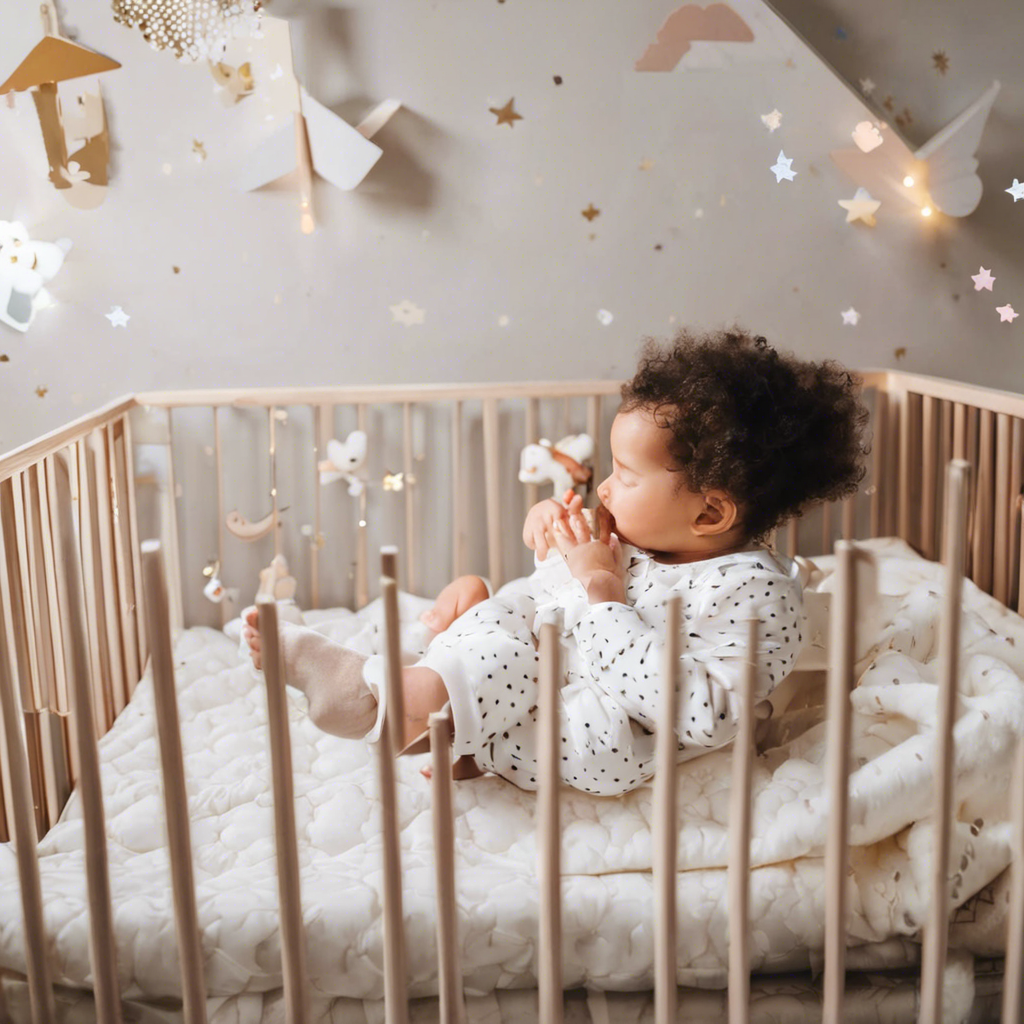Deciding where your baby should sleep is one of the most debated topics among parents. Some swear by the benefits of co-sleeping, while others advocate for crib sleeping as the safest option. Both sleeping arrangements have their advantages and potential risks, making it essential for parents to weigh the pros and cons before making a decision that aligns with their family’s lifestyle and safety considerations. While some cultures have embraced co-sleeping for centuries, modern research and pediatric guidelines often highlight crib sleeping as the safest choice. However, every family is different, and understanding both sides of the debate can help parents make the best decision for their little one.
Co-sleeping, also known as bed-sharing, involves a baby sleeping in the same bed as their parents. Supporters of this method believe it fosters a strong emotional bond, encourages breastfeeding, and helps babies sleep more soundly. The close proximity allows parents to quickly soothe their baby during the night, reducing stress for both the baby and the parents. Many mothers report that breastfeeding is easier and more frequent when their baby is within arm’s reach, leading to better milk production and improved nutritional benefits for the infant. Additionally, babies tend to wake up less frequently and fall back asleep more quickly when they are near their parents, which can contribute to a more restful night for the whole family.
Despite these benefits, co-sleeping comes with significant safety concerns. The American Academy of Pediatrics (AAP) warns against bed-sharing due to the risk of Sudden Infant Death Syndrome (SIDS), suffocation, and accidental injury. Soft bedding, pillows, and blankets increase the likelihood of a baby’s airway becoming blocked. Additionally, a parent’s movement during sleep, unintentional rolling over, or even the baby getting trapped between the mattress and headboard can pose life-threatening dangers. Research has shown that babies under four months old are particularly vulnerable to these risks. While some parents opt for safe co-sleeping alternatives like bedside sleepers or co-sleeping bassinets, the risk remains higher compared to crib sleeping.
On the other hand, crib sleeping is widely recognized as the safest option for infants. A crib provides a controlled, hazard-free environment where babies can sleep independently without the risks associated with bed-sharing. Pediatricians recommend placing babies on their backs in a firm crib with a fitted sheet, free from pillows, blankets, or stuffed animals. This sleep setup significantly reduces the chances of SIDS and ensures that the baby remains in a safe position throughout the night. Additionally, crib sleeping establishes a routine that encourages babies to develop independent sleep habits, which can be beneficial as they grow older.
One of the primary advantages of crib sleeping is that it allows both parents and babies to get better quality rest. While it may take time for some babies to adjust to sleeping alone, a consistent sleep routine in a crib helps them learn to self-soothe. Parents also benefit from uninterrupted sleep, reducing the exhaustion that can come with frequent nighttime awakenings. Furthermore, a separate sleeping space provides a safer environment for babies with medical conditions such as reflux, respiratory issues, or a higher risk of SIDS. For many families, a crib offers peace of mind, knowing that their baby is in a secure and controlled space designed specifically for infant sleep.
However, crib sleeping is not without its challenges. Many newborns struggle with the transition from being held or rocked to sleeping alone in a crib. Some parents experience sleepless nights due to frequent wake-ups and difficulty soothing their baby back to sleep without the close physical presence that co-sleeping provides. Sleep training methods, such as the Ferber method or gradual sleep training, may be necessary to help babies adapt to sleeping independently. Additionally, some parents find that crib sleeping limits their ability to respond quickly to their baby’s needs, especially during the early months when nighttime feedings are frequent.
Cultural perspectives also play a significant role in shaping parents’ decisions about co-sleeping versus crib sleeping. In many Asian, African, and South American cultures, co-sleeping is the norm and is considered essential for fostering a strong parent-child bond. In contrast, Western societies tend to emphasize the importance of independence and sleep training, with crib sleeping being the recommended standard. Studies have shown that co-sleeping can provide emotional and psychological benefits, as babies feel secure and comforted by their parents’ presence. However, cultural norms should always be balanced with modern safety recommendations to ensure the best possible sleep environment for the baby.
For parents who are undecided, a compromise between the two methods may be the best solution. Room-sharing, where a baby sleeps in a crib or bassinet in the same room as the parents, provides many of the benefits of co-sleeping while minimizing the risks. The AAP recommends room-sharing for at least the first six months, as it allows parents to keep a close eye on their baby without the dangers of bed-sharing. Room-sharing also makes nighttime feedings and soothing more convenient while giving the baby a separate, safe sleeping space. Some parents use a bedside sleeper that attaches to their bed, offering a middle-ground option that keeps the baby nearby without direct bed-sharing.
Ultimately, the best sleeping arrangement is the one that ensures both the baby’s safety and the family’s well-being. Parents should consider their baby’s temperament, health conditions, and sleep patterns when making this decision. Safety should always come first, and regardless of whether parents choose co-sleeping or crib sleeping, following guidelines to create a secure sleep environment is essential. If parents choose to co-sleep, they should eliminate all loose bedding, use a firm mattress, and avoid sleeping with the baby if they have consumed alcohol or are excessively tired. If they opt for crib sleeping, ensuring that the crib meets safety standards and follows the recommended guidelines can provide the safest sleep environment for their baby.
New parents often feel pressure to follow specific parenting styles, but sleep arrangements should be based on what works best for their family’s needs and safety. Open communication between partners, discussions with pediatricians, and being flexible with sleep strategies can make the transition easier for both parents and baby. No two families are the same, and what works for one may not work for another. The key is to stay informed, trust parental instincts, and create a sleep routine that fosters both safety and comfort for the baby.

